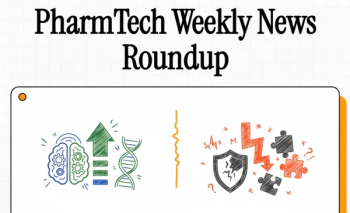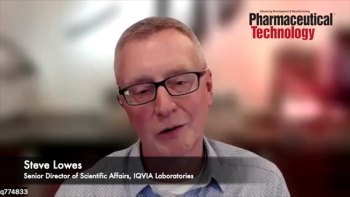
Pharmaceutical Technology Europe
- Pharmaceutical Technology Europe-01-07-2011
- Volume 23
- Issue 1
Will DTC Advertising Appear In Europe?
Direct-to-consumer (DTC) advertising is firmly entrenched in the US, but has historically been considered as an inappropriate means of communication in Europe for prescription-only medicines.
Over the past 2 years there has been an overt drive by the European Parliament to improve patient access to information on medicines. However, there is growing concern that some of the proposals put forward will lead to direct-to-consumer (DTC) advertising.1 Historically, in Europe, DTC has been considered an inappropriate means for pharma companies to communicate with patients because it bypasses the healthcare professional.
DTC in the US
In the US, DTC advertising is firmly entrenched, characterised by low government intervention in the market. Historically, advertising was always directed at healthcare professionals, but the increasing involvement of patients in healthcare decisions prompted some companies to change tactics.2 The first print DTC advertisement in the US appeared in 1981 from Boots for its ibuprofen product, Rufen. This was shortly followed by a similar approach from Merck for Pneumovax, its pneumonia vaccine.
These developments took the FDA by surprise and it was forced to quickly react to the situation. In 1982, the agency asked pharma companies for a voluntary moratorium on DTC advertisements while it researched the issue. Its surveys revealed a desire from patients for more information about medicines, so in 1985 the agency decided that DTC was permissible provided that it met the same legal requirements as advertising directed at healthcare professionals. At this stage, DTC took off and with time the number of promotional routes increased to take in radio and television.
One of the main problems for the FDA was that official regulations were not designed to cover advertising. The 1906 Food and Drugs Act, which represented the basis of future regulations, only focused on the information provided on the medicine's label — advertising was never specifically mentioned. Another issue was that the advertising itself was under the jurisdiction of the Federal Trade Commission (FTC), which could only act if a company's promotional advertising adversely affected that of another company. Deceptive advertising itself was not covered.
It was only in the early 1960s that regulatory authority over prescription drug advertising was transferred from the FTC to the FDA. Within the FDA, drug advertising is now regulated by the Division of Drug Marketing, Advertising and Communications (DDMAC); however, no official regulations specifically mention DTC. This vagueness effectively means that the agency has been playing catch up in trying to regulate novel advertising developments. The appearance of the internet as a promotional channel is one such example.
Despite its existence, DTC advertising has a number of opponents in the US. For a start, many observers do not like the fact that it is difficult to determine exactly how much is being spent by the pharma industry on such promotional measures.3 When dealing with the media, the pharma industry likes to stress its investment in R&D, but while stating that promotion is vital to its work, the industry appears reluctant to provide financial figures.
The author says...
Those who favour DTC believe that it heightens patient interest in their health and brings them information on new products that they might otherwise not know about.4 Others, however, believe that pharma companies do not provide impartial information, which puts the physician under pressure when a patient asks about a product they have seen advertised. Also, many consumer groups believe that drug prices are becoming too high, fuelled by DTC.
Outside the US, New Zealand, Bangladesh and South Korea allow limited DTC advertising, while in some other markets limited advertising has been permitted for certain vaccines.5 Most attention, however, has been on whether Europe will ever permit DTC — particularly as European regulators have often adapted a number of US regulations for the region.
DTC advertising for Europe?
Previous efforts to introduce DTC approaches in Europe have been rejected. In 2002, the EC introduced a proposal to allow pharma companies to answer patient requests in three disease areas: diabetes, asthma and HIV/AIDS.6,7 The intention was to allow a 3year trial period, but these measures were strongly rejected by the European Parliament. Surprisingly, the measures were also rejected by the pharma industry, which made it clear that it had not sought to change the existing regulations regarding the direct provision of information to patients. Nevertheless, the industry did use the opportunity to express irritation in the way it was monitored. For example, it asked why specific laws stood in the way of it communicating with patients over its products, even when others could. Presumably, this meant information communicated by the media about new medicines. In this regard, the restrictions on the pharma industry contrast with the freedom enjoyed by manufacturers of vitamins and herbal remedies, who routinely advertise products to patients. The pharma industry also asked why companies manufacturing foods containing unhealthy ingredients were not prevented from freely communicating with the public.
While not advocating DTC advertising outright, the European pharma industry has consistently held the position that in a regulated environment there should be some means for companies to communicate directly with patients regarding their medicines. Given the carefully worded statements from the pharma industry suggesting that it is not openly seeking change, it is therefore surprising that DTC proposals continue to be put forward for debate in the European Parliament.
Part of the reason could be because ideas around DTC have not been raised in isolation and make up the so-called "pharmaceutical package" currently being discussed at EU level.8 The package includes measures for tackling counterfeit medicines and improving pharmacovigilance, which have been widely welcomed. However, it also includes measures for disseminating information to patients, which has alarmed opponents of DTC.
However, the driving force for these changes is patients, who feel that they still have difficulties in accessing medicines' information. In their minds, the focus for policy change is on the provision of information rather than promotion. It is widely agreed that information on medicines in Europe is fragmented, which puts patients at a disadvantage in receiving healthcare.9
At present, Article 88 of Directive 2001/83/EC — a set of rules for pharmaceutical advertising — prohibits DTC advertising of prescription-only medicines, but interpretations of the directive can vary between EU member states.9 Presumably, those who back a revision to the way information is communicated in Europe believe some sort of standardisation is needed and that some aspects of DTC could be acceptable if they benefit the patient.
The lack of clarity over what is being proposed for Europe has caused a number of delays with the EC's Directive on Information to Patients. In November 2010, some progress was made with potential promotional routes for information being specifically rejected;9 MEPs backed measures to ban information on prescription drugs being made available on radio and television, and also extended the ban to print media. At the first reading of the legislation, MEPs supported the provision of "objective information on a drug's characteristics and the treated disease or condition", but rejected "unsolicited information or disguised advertising".8
What the current legislation does acknowledge is that pharma companies know their products best. In line with this, the legislation will allow companies to provide basic information on product characteristics, labelling and package leaflets, as well as an accessible version of a drug's assessment report. However, it will be up to individual member states whether or not to extend this to include other non-promotional information, such as pricing details and packaging changes.
Providing more information may enhance the role that European patients play in healthcare. For example, there are hopes that, by being better informed, patients will be able to contribute towards pharmacovigilance measures by reporting their adverse effects directly to national authorities.10 The European Parliament has introduced draft legislation to facilitate the introduction of specialised pharmaceutical portals that would contain an array of medical information on medicinal products and their proven side effects. These would also instruct patients on how to report adverse events using these sites and other means. The national portals will also be linked to EU ones so that information is not lost across the region. At the moment, one of the alleged weaknesses in the EU is that information on an adverse reaction at national level may not be recorded at a regional level, thereby not providing a full picture of a product's potential side effect profile.
Summary
In Europe, patient demand for increased access to information on medicines looks likely to result in pharma companies being permitted to directly communicate with patients. However, it is difficult to see DTC evolving into the advertising style typified by the US market, particularly as the European pharma industry itself has been careful to distance itself from such an approach. The culture and market conditions in Europe remain very different to those in the US and so it unlikely that DTC advertising would ever have a receptive audience.
References
1. European Public Health Alliance, "Direct-To-Consumer Advertising — for or against?" (2008).
2. F. B. Palumbo and C.D. Mullins, Food and Drug Law Journal, 57(3), 423–443 (2002).
3. M.A. Gagnon and J. Lexchin, PloS Medicine (January, 2008).
4. P. Kelly, Health Affairs (April, 2004).
5. GSK, "Direct-to-consumer advertising" (2010).
6. ABPI, "ABPI welcomes European Parliament decision on DTC" (2002).
7. Inpharm, "DTC: the new philosopher's stone?" (2003).
8. Scrip 100, Reform on the Agenda (2010).
9. PharmaTimes, "MEPs vote for pharma to 'inform, not advertise'" (2010).
10. European Parliament, "Protecting patients: EU to upgrade medicine safety monitoring. European Parliament" (2010).
Articles in this issue
almost 15 years ago
Newsalmost 15 years ago
Using Excipients In Powder Formulationsalmost 15 years ago
Should We Back DTC in Europe?almost 15 years ago
The Growth Of ODTsalmost 15 years ago
An Update On The EU's Plans For Excipient Regulationalmost 15 years ago
Using Excipients With Biologicsalmost 15 years ago
The role of sterile filtration in the biopharm industryalmost 15 years ago
The Use Of UHPLC In Post-Drug Developmentalmost 15 years ago
Is There A Need For Stringent Regulations For Excipients?Newsletter
Get the essential updates shaping the future of pharma manufacturing and compliance—subscribe today to Pharmaceutical Technology and never miss a breakthrough.





